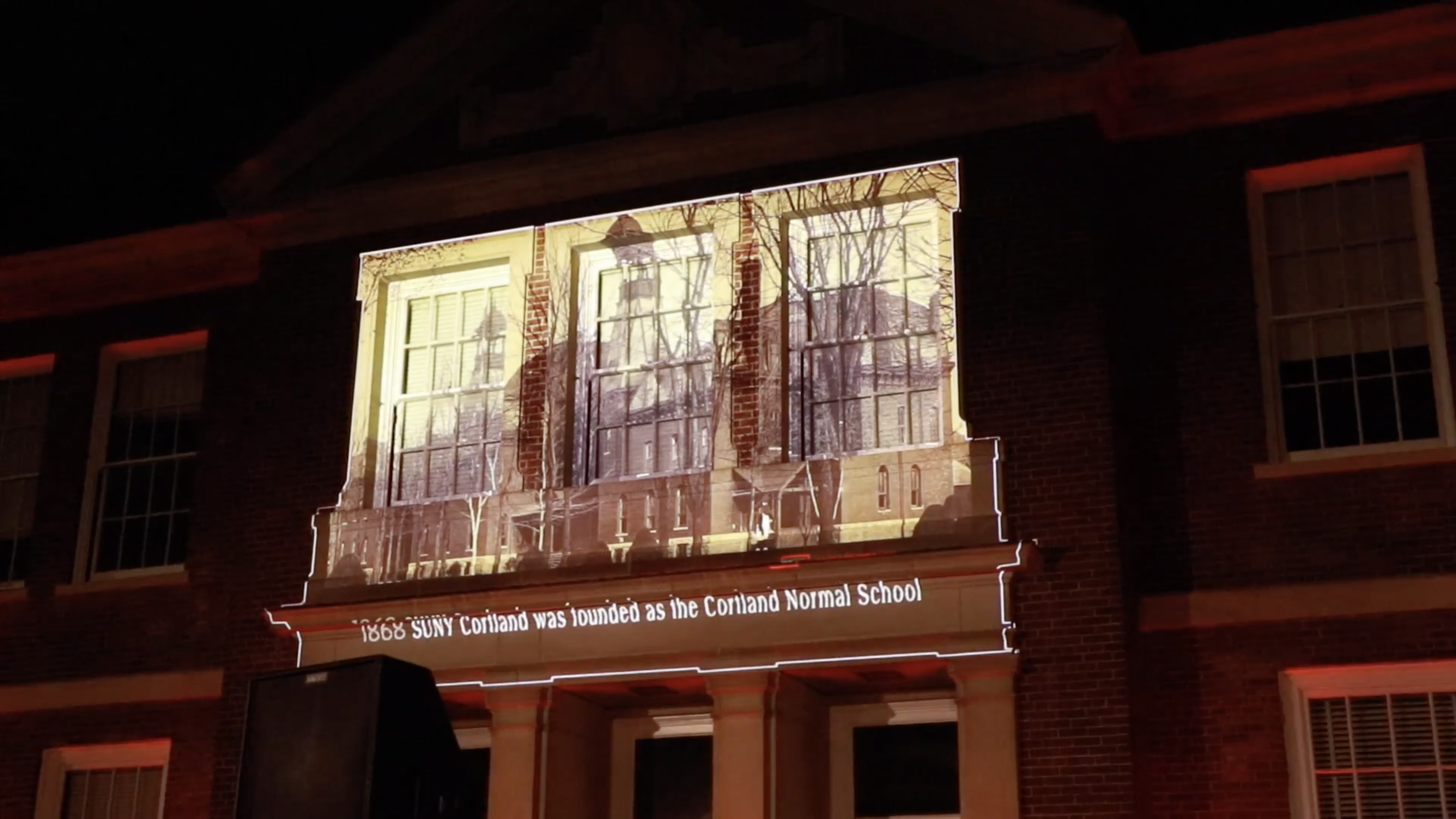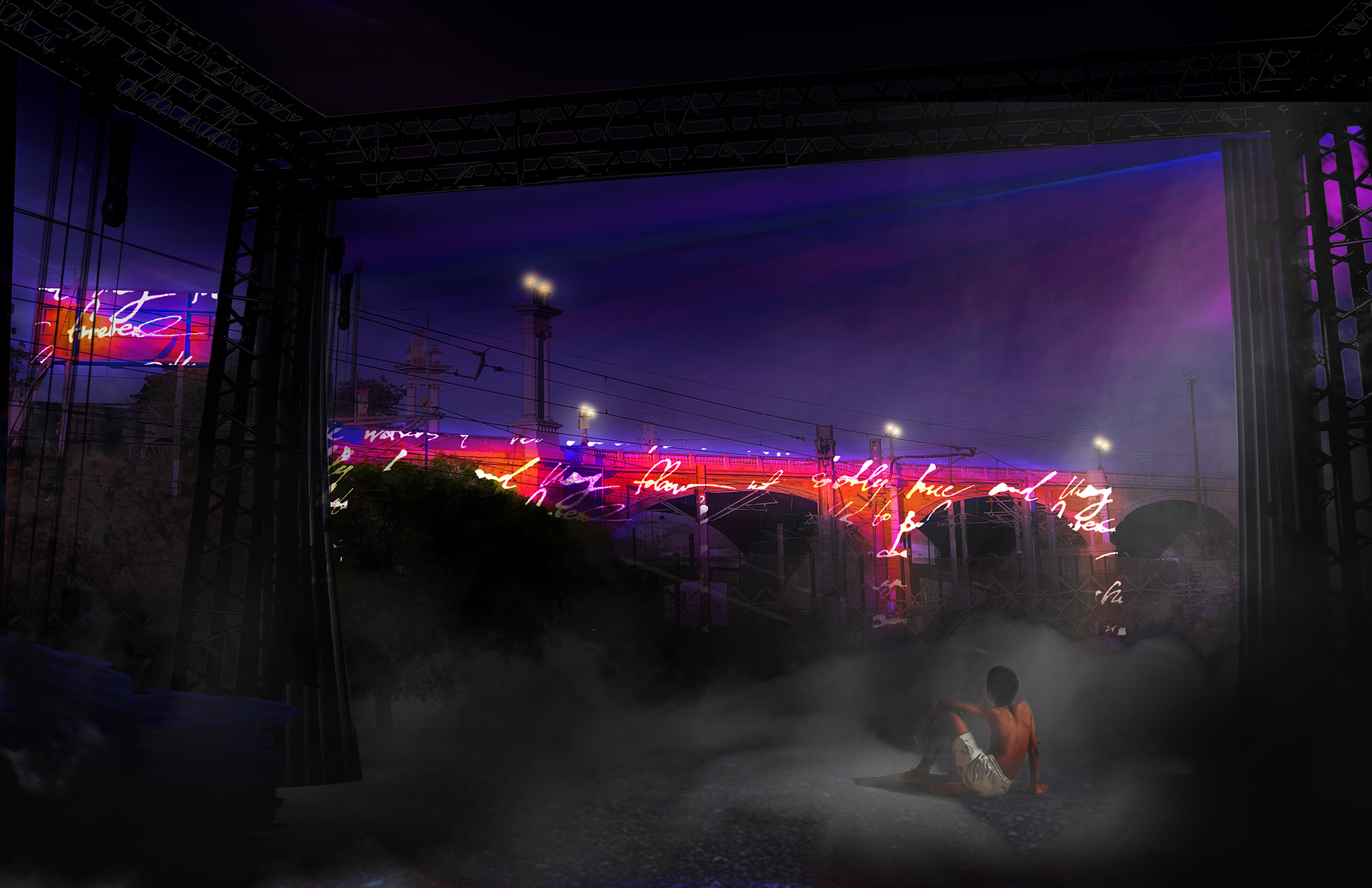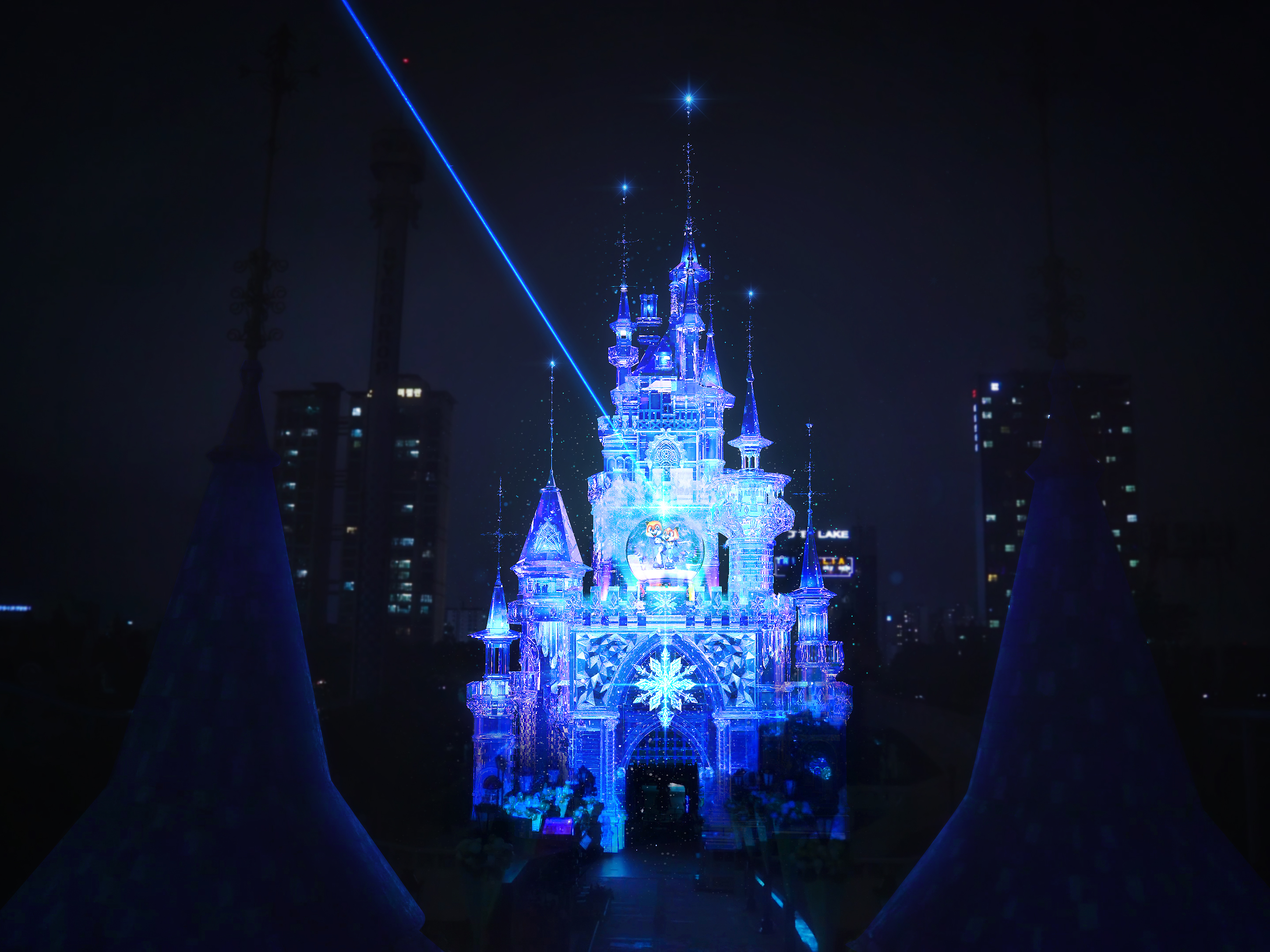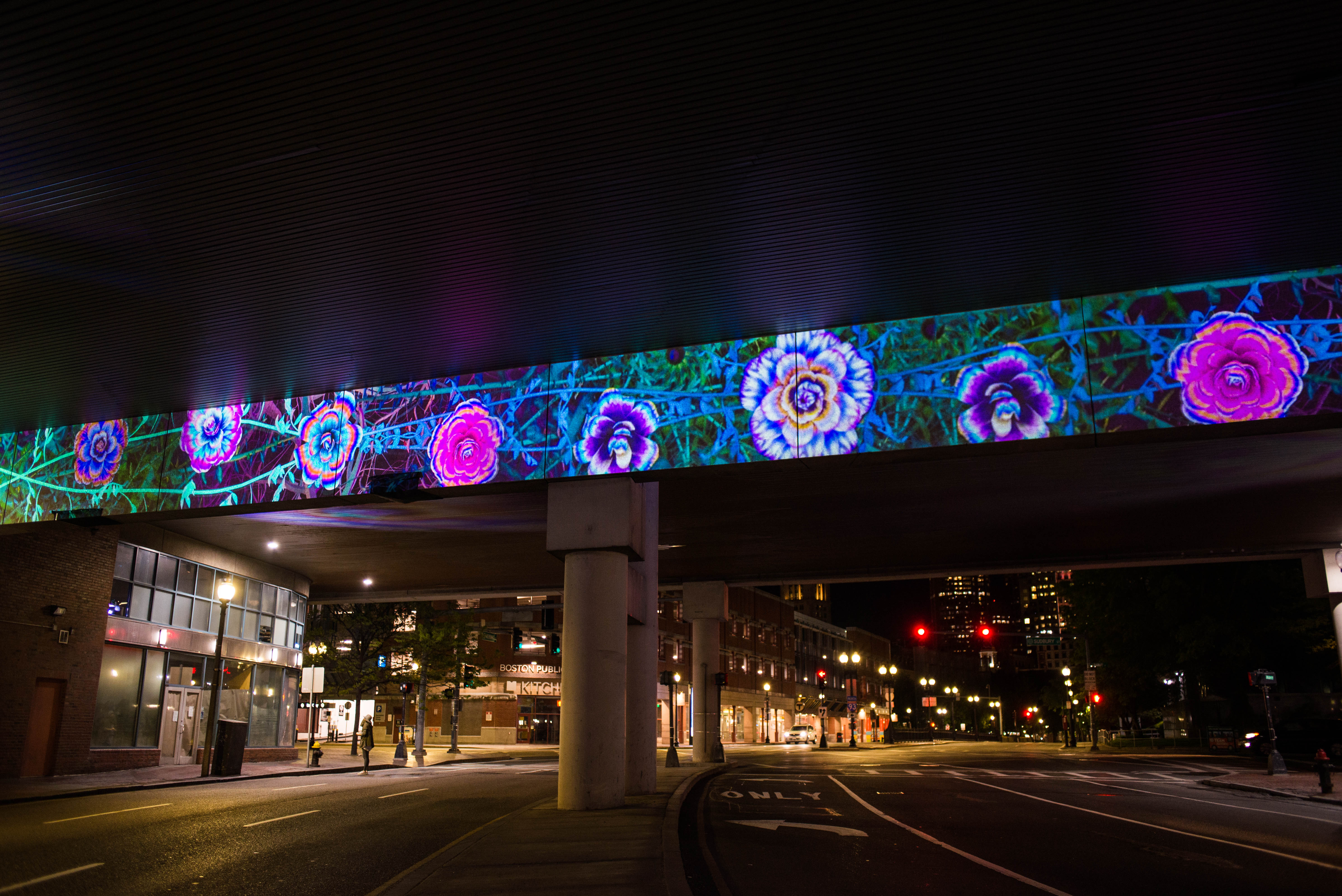The coronavirus pandemic pressed the pause button on live events, galas, and public gatherings in 2020. Everything from Broadway shows to college commencements were canceled or amended for digital-only viewing. Forbes has reported that “more than 83 million attendees” were forced to change plans due to ripple effects from COVID-19.
As segments of the economy slowly reopen, AV specialists look forward to a re-engagement with site-specific experiences. Projection mapping in particular is expected to regain momentum thanks to its incomparable wow factor and creative potential. For communities eager to reconnect, narrative-driven 3D mapping will provide reasons to celebrate.
[The Tech Manager's Guide to Projectors and Screens]
Sensational AV
As proposals for temporary and permanent installations progress in 2021, organizations who want to “make a big splash” will turn to large-scale audiovisual experiences, said Brad Martin, senior product manager, Christie Digital.
“For a university celebrating a hundredth anniversary, or for the NHL, projection mapping is the way to go,” Martin said. Museums, retail environments, theme parks, and stadiums all turn to projection mapping to deliver “spectacular shows,” he added.

Gradual Reopening
The category has been diversifying and growing in popularity for decades. Every year, “somebody’s trying to do something more impressive with projection mapping,” Martin observed. “We’re hoping that in 2021 we will see folks reengage. There is an end in sight, and it is realistic to think that we’re going to gradually return to business—at an ever-grander scale.
Ecosystem of Technologies and Service
Joe Conover, strategic manager, Panasonic Themed Entertainment Solutions, takes a big-picture approach, thinking broadly about applications for environmental mapping, warping, blending, and projecting. Panasonic’s strengths in engineering and fulfilment can help partners and customers tackle projects large and small, and “transform” just about any surface, he said.
“Panasonic offers additional value outside of the hardware for our themed projection projects, with R&D consulting, engineering, and support services,” said Conover. “That’s really where we come in as a company. We can quickly provide projection studies and determine what’s feasible. For our partners, resellers, or distribution channels, to our mainstay installation business, be it fixed or rental and staging, we do very well with our large-venue products since they are best in class considering overall size, weight, and brightness ratio.”

Joel St-Denis, senior product manager, Christie Digital, also believes in an ecosystem approach. St-Denis manages the Christie Mystique camera-based alignment and projection recalibration software, as well as Christie Twist, the visualization solution for warping and blending on any 3DLP projector. The technology also provides networked projector control.
[Q&A: Christie's RGB Pure Laser Projection]
Unlocking the collective power of “the entire projection mapping ecosystem,” St-Denis said—from Christie’s RGB “true laser” engine to advanced lensing and media servers—will drive the next chapter of innovation. Christie also offers R&D services, training, and education for its channel partners, including hosting a Rental & Staging Summit last year.
Magic Show
A notable Christie application in South Korea illustrates both the technical prowess and creative flair of projection mapping. On a scenic manmade island within the Lotte World entertainment and recreation complex, the client wanted to transform the park’s iconic 150-foot Magic Castle with a 3D multimedia mapping show. To accomplish this, the integration team deployed three Christie D4K40-RGB projectors, which, Martin said, are “some of Christie’s latest, greatest true-laser projectors with our camera-based alignment system, Mystique, to keep the projectors aligned.”

The Lotte World Magic Castle installation, completed in 2020, also deploys Christie’s Pandoras Box media server to drive stunning content designed by d’strict and based on the formative characteristics of the castle’s architectural structure. With the Christie Terra video distribution in place, the team sends 4K images through the 10 Gb network, via SDVoE, with no signal loss or degradation.
[ Christie 3D Projection Mapping Lifts Rocket Launch at Cape Canaveral ]
Color Accuracy Is Key
For Sander Phipps, national account manager, visualization and simulation, at Sony, critical factors in projection mapping are color accuracy and smooth imagery. Popular projection-mapping applications for Sony are precise deployments like industrial design, car shows, or museum events, where contrast and color are crucially important. This is where Sony excels, said Phipps: “Our projectors are able to re-create subtle hues and subtle tones exactly.”
[Leviathan Uses Projection Mapping to Illustrate Jabil’s Manufacturing Scope]
Sony offers a line of native 4K SXRD (Silicon X-tal Reflective Display) models with a “very fine pixel pitch,” Phipps explained, “which provides an incredibly smooth image.”
“There are three different wavelengths of lasers in our projector,” he said. “We also have 18,000:1 native contrast ratio with the SXRD. With this level of contrast, you can show the most subtle differences,” Phipps said. “We’re also very good at showing an HDR signal, so content can be created in a high dynamic range.”
All-in-One
On the entry level, there’s a growing crop of vendors offering “add-ons” for projection mapping as well kits that merge scanning, content creation, projection, and display. For instance, the Lightform LF2+ (MSRP under $1,000) is a sound-reactive AR solution for smaller spaces that lets users scan an object or space; apply effects, videos, and custom content; upload that content (untethered from a computer); project; and then activate with audio. Low-lumen but easy-to-use solutions of this ilk are limited in scope, but might bring more clients into the projection mapping conversation.
Creative Potential
Projection mapping is both a fine art and a complex science. Essential elements include the initial designs, 3D modeling, proper device placement, light/brightness requirements, adequate lensing—ultra-short throw to ultra-long throw and everything in between. In addition to ensuring you have the requisite media server features to support content playback, there’s also mirroring, networking, cabling, and audio, of course. With the technical elements locked in, the creative possibilities are limitless.

Ramzi Shakra, product manager, Epson America, takes all of these steps into account to catch and keep the viewer’s attention. The company’s line of large-venue projectors combines “extreme brightness, uncompromised image quality, and robust features,” according to Shakra, such as built-in cameras that provide access to automated features including projector stacking assist, tiling assist, and color calibration to “enable users to confidently project content and captivate audiences.”
Panasonic’s Conover is looking forward to getting back to some form of normalcy soon—and supporting AV stakeholders along the way. “On the fixed installations front,” Conover said, “on the large scale, we will be there for you, arm in arm, shoulder to shoulder, boots on the ground.”
[ The BIg Picture: A Look at the Growing Projection Mapping Market ]
Leveling Up
If there was any downtime during the pandemic, AV professionals seized opportunities to “reevaluate,” said Christie’s Martin, “learn new software, explore, prepare, and research what they may want to work on next. There are a lot of proposals that have been going back and forth.”
It’s just a matter of time, he said, for the gates to fully open again.
